Hint: BLTouch incorrect measurement due to magnetic print bed
-
Hi,
I have two Z-Probes... from earlier days the BLTouch which was then replaced by the Duet3D-IR-Probe (by dc42).
But I still left the BLTouch on the print head.
The BLTouch is supposed to be for difficult surfaces, which the IR-Probe has its problems with.
The BLTouch was not connected and set up for a long time after installing the IR-Probe because I did not know if both would work together, and I did not need the BLTouch at the time.Now I have connected and set up both sensors.
When measuring the two sensors, I noticed that the BLTouch delivered completely wrong values.The magnetic print bed (Blackprint from Printbay) that I use came after I bought the IR-Probe.
Since the BLTouch works with a HAL-Sensor that reacts to magnetic fields, I figured these false readings from the BLTouch could only come from the magnetic print bed.
So I shielded the BLTouch from the magnetic field from the print bed.
I used tinplate from a cookie jar.
Yes, I know, other metals such as iron or cobalt etc. are better suited for shielding, but unfortunately I don't have these and therefore the tinplate first had to show what it can do.
Here are some pictures of how I covered the BLTouch with the sheet metal and then glued it together with superglue (just the metal parts).
Before I wrapped the sheet metal around the BLTouch, I put a layer of Kapton-Tape on the BLTouch to prevent short circuits due to the open contacts on the back of the BLTouch.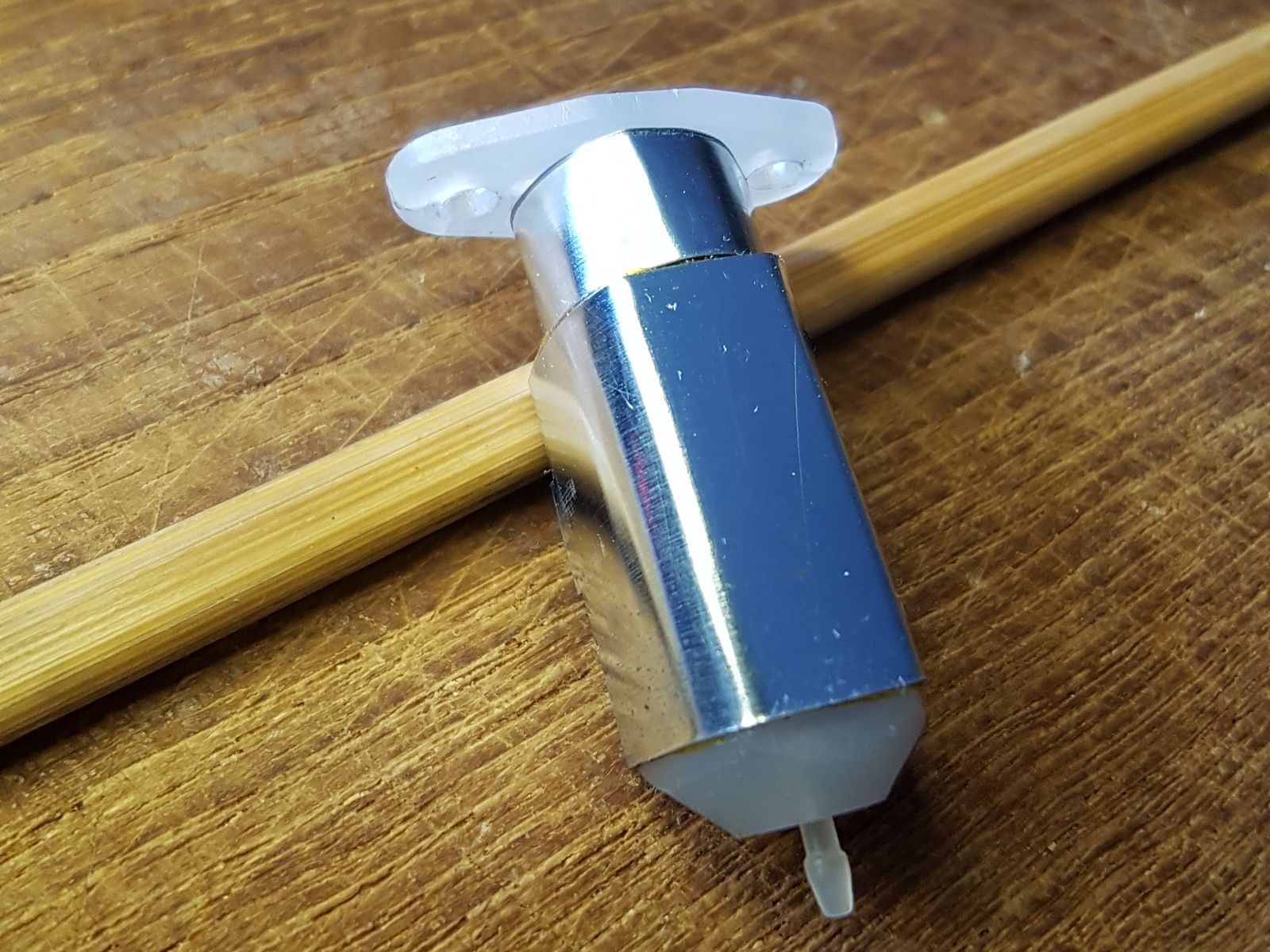

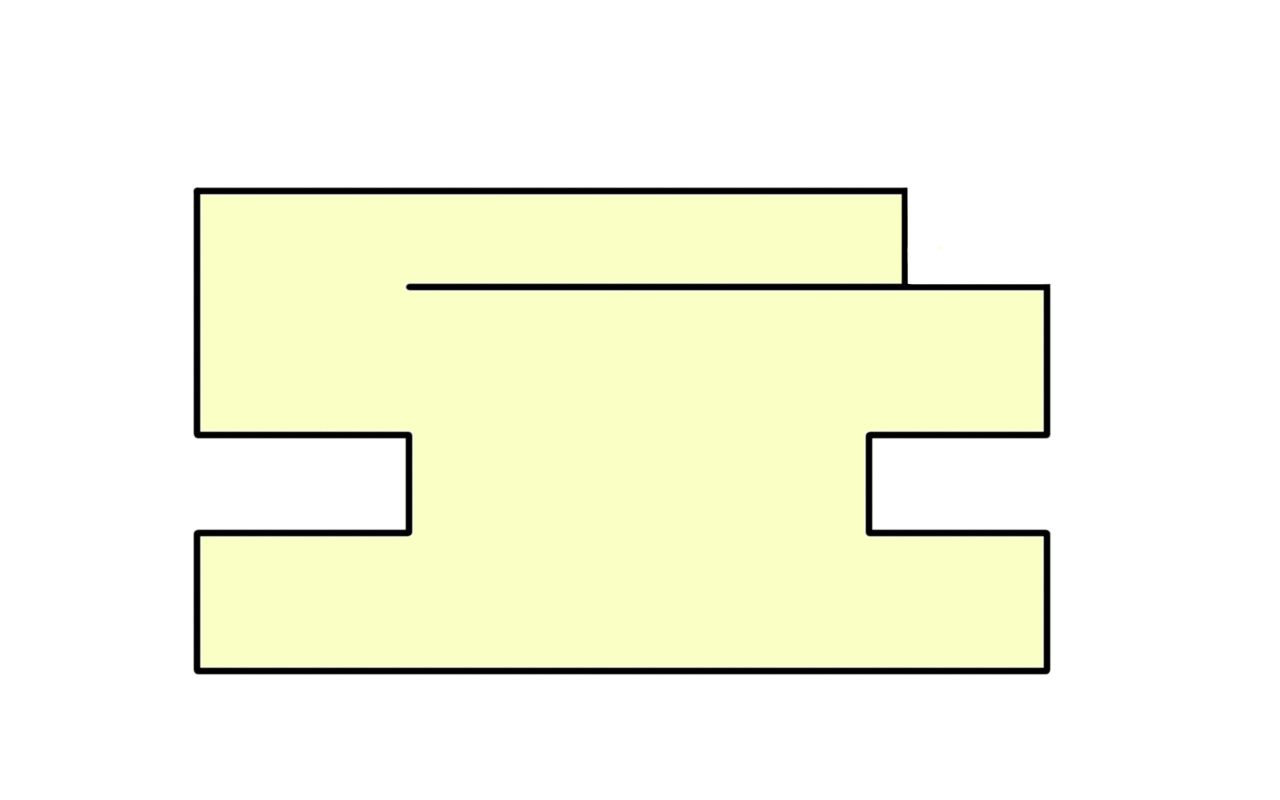
The sheet metal consists of one part
Cutting plan (unfortunately without exact dimensions)Here are the readings from the sensors.
- Screenshot: IRProbe
- Screenshot: BLTouch without shielding
- Screenshot: BLTouch with shielding
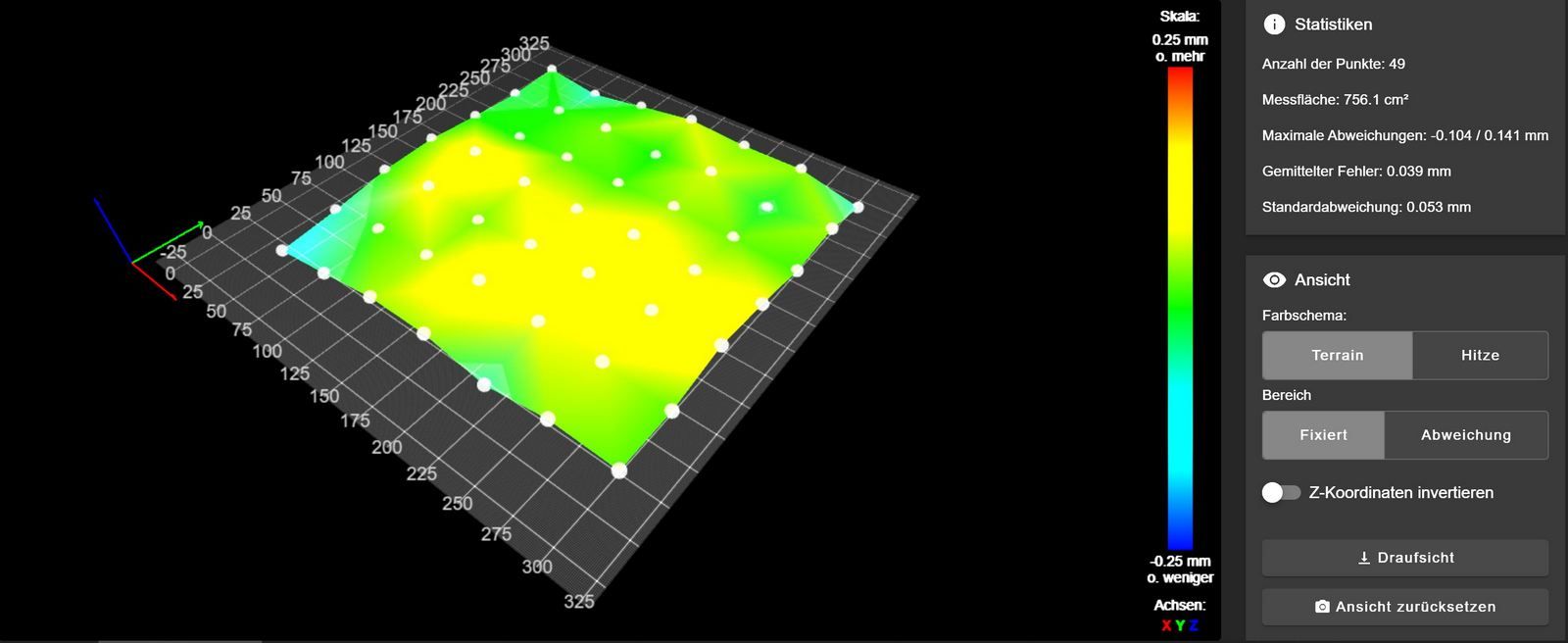
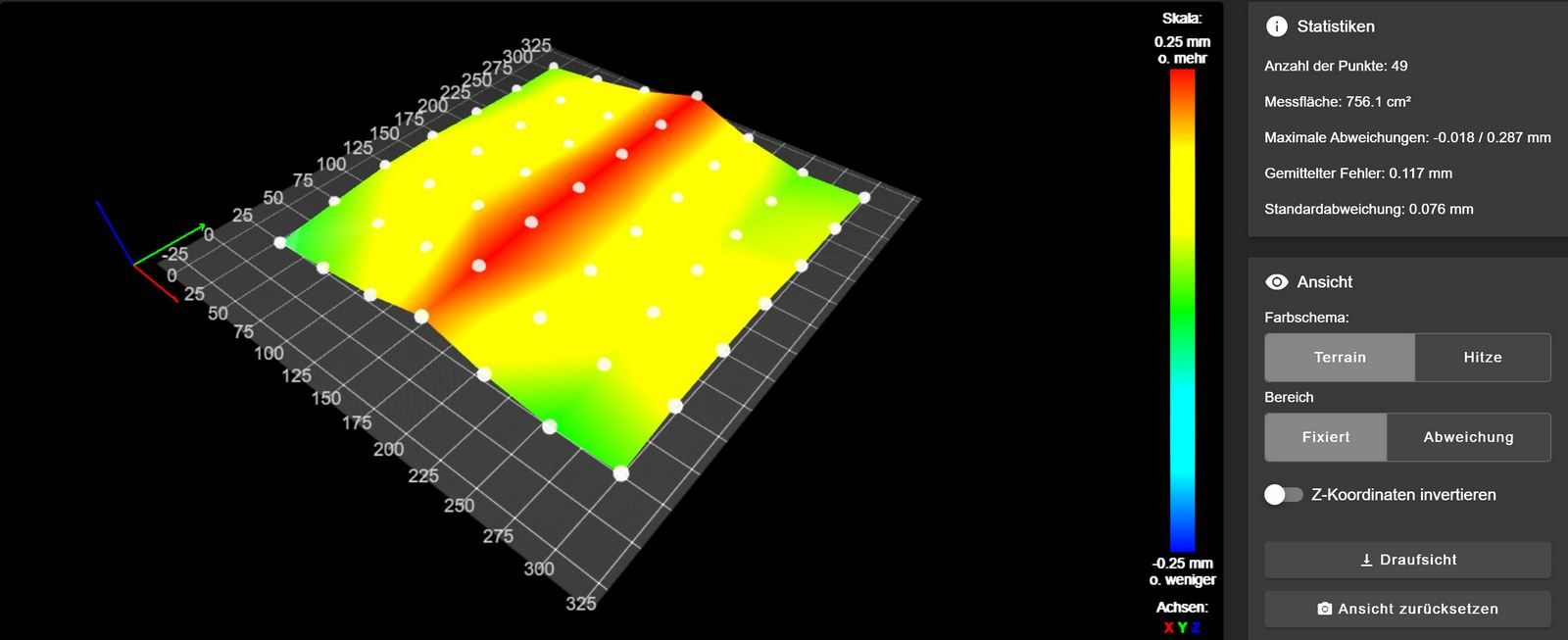
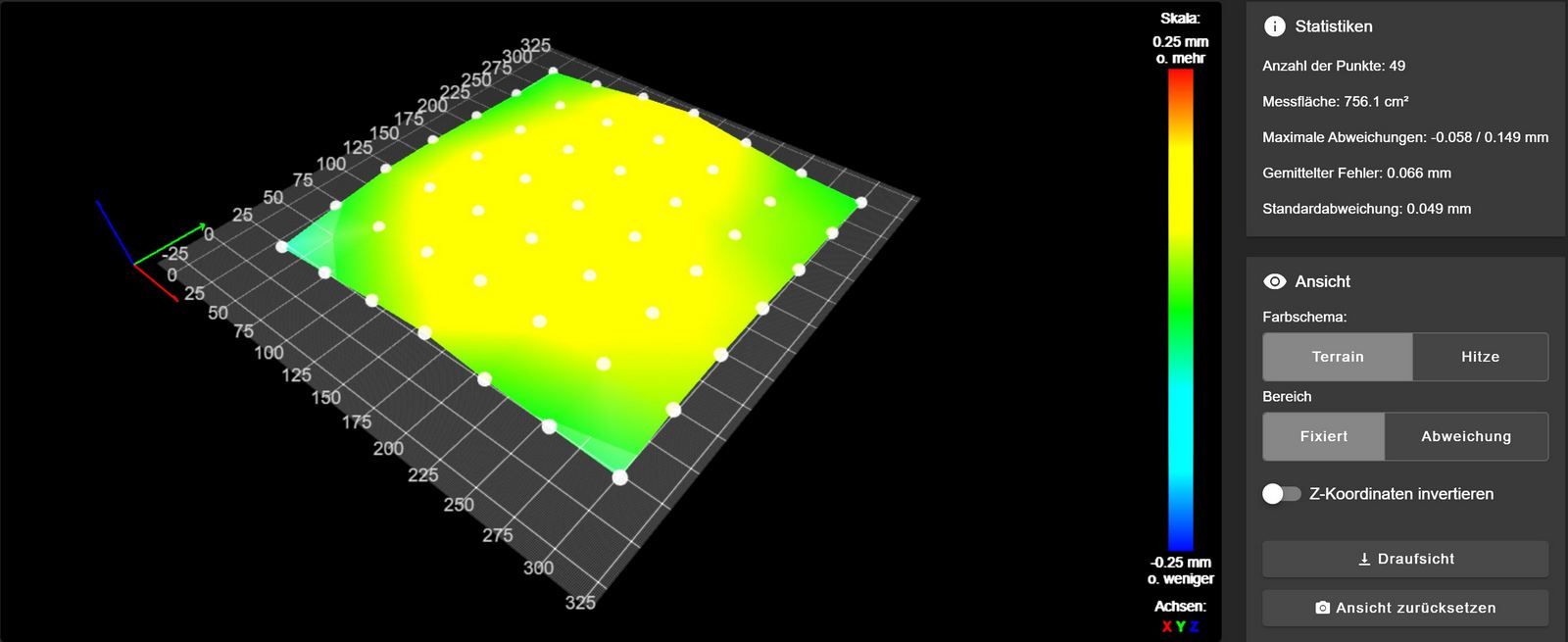
So if you also have a BLTouch and a magnetic print bed and get strange measurement results, then think about whether it could be magnetic interference fields that influence the BLTouch
Google Translate
----- Original Text -----Tip: BLTouch Fehlmessung durch magnetisches Druckbett
Moin,
ich habe zwei Z-Sonden... aus früheren Tagen noch den BLTouch der dann durch den Duet3D-IR-Probe (von dc42) abgelöst wurde.
Aber ich habe den BLTouch noch am Druckkopf gelassen.
Der BLTouch soll für schwierige Oberflächen sein, womit der IR-Probe seine Probleme hat.
Der BLTouch war nach dem Einbau des IR-Probe lange nicht angeschlossen und eingerichtet weil ich nicht wusste ob beide zusammen funktionieren, und ich hatte den BLTouch zur Zeit auch nicht benötigt.Nun habe ich beide Sensoren angeschlossen und eingerichtet.
Bei den Messungen der beiden Sensoren ist mir aufgefallen dass der BLTouch komplett falsche Werte liefert.Das magnetische Druckbett (Blackprint von Printbay) welches ich nutze, kam nach dem Kauf des IR-Probe.
Da der BLTouch mit einem HAL-Sensor funktioniert der auf Magnetfelder reagiert, dachte ich mir, diese falschen Messwerte des BLTouch können nur vom magnetischen Druckbett kommen.
Also schirmte ich den BLTouch gegen das Magnetfeld vom Druckbett ab.
Ich habe dazu Weißblech einer Keksdose genommen.
Ja ich weiß, andere Metalle wie Blech aus Eisen oder Kobald etc. sind zur Abschirmung besser geeignet, aber diese habe ich leider nicht und von daher musste erst einmal das Weißblech zeigen was es kann.
Hier jetzt einige Bilder wie ich den BLTouch mit dem Blech ummantelt habe und es dann mit Sekundenkleber zusammen geklebt habe (nur die Metallteile).
Bevor ich das Blech um den BLTouch wickelte, kam eine Schicht Kapton-Tape auf den BLTouch, damit es wegen der offenen Kontakte auf der Rückseite vom BLTouch nicht zu Kurzschlüssen kommt.(Siehe erstes Bild oben)
(Siehe zweites Bild oben)
(Siehe erste Zeichnung oben)
Das Blech besteht aus einem Teil
Zuschnittplan (leider ohne genauen Maße)Hier die Messwerte der Sensoren.
- Screenshot: IRProbe
- Screenshot: BLTouch ohne Abschirmung
- Screenshot: BLTouch mit Abschirmung
(Siehe ersten Screenshot oben)
(Siehe zweiten Screenshot oben)
(Siehe dritten Screenshot oben)Solltet ihr also auch einen BLTouch und ein magnetisches Druckbett haben und merkwürdige Messergebnisse geliefert bekommen, dann denkt mal darüber nach ob es nicht magnetische Störfelder sein könnten die den BLTouch beeinflussen.
-
@norder said in Hint: BLTouch incorrect measurement due to magnetic print bed:
The BLTouch is supposed to be for difficult surfaces
Another option for difficult surfaces are stowaway probes such as the Klickey or Euclid.
-
@zapta
I know the Euclid sensor, I think it's great.
But now I've had this BLTouch for so many years and it does its job perfectly, so why buy something new?
In addition, I would then have to rebuild my print head.At some point I wanted to get away from the linear rails and the Z-spindles and towards round steel rods (like the Prusa) and instead of the Z-spindles there should be toothed belts with gears at some point, like the Voron.
And then there might be a new bed level sensor too.
Google Translate
----- Original Text -----Den Euclid Sensor kenne ich, den finde ich klasse.
Aber nun habe ich schon so viele Jahre diesen BLTouch und er macht seine Arbeit perfekt, also warum etwas neues kaufen ?
Zudem müsste ich dann meinen Druckkopf wieder umbauen.Irgendwann wollte ich weg von den Linearschienen und den Z-Spindeln hin zu Rundstahl-Stäbe (so wie der Prusa) und anstelle der Z-Spindeln sollen dort irgendwann einmal Zahnriemen rein mit Getriebe, so wie beim Voron.
Und dann gibt es vielleicht auch einen neuen Bettlevel-Sensor.
-
@norder Interesting; how thick was the sheet metal?
-
@paralepsis
It is exactly 0.15mm thick.
It's from a cookie jar like this one. Click me. -
@norder
 thanks!
thanks! -
@norder said in Hint: BLTouch incorrect measurement due to magnetic print bed:
At some point I wanted to get away from the linear rails ... towards round steel rods
At the time I had bad experience with round rods for X on my Hypercube Evo. They was not as stiff as they should be. Now using a 12mm linear rails on a 2020 extrusion (Voron V2.4) and it's much stiffer. I can move fast over, without the head heating the infill. YMMV.
-
@norder I wonder if aluminum foil or tape would work, too?
 for smooth rods against linear rails
for smooth rods against linear rails -
@zapta
12mm were also my considerations.
Voron... my favorite 3D printer.
-
@o_lampe
Other sheet metal or material...
I asked myself the same.
I haven't tried regular aluminum foil.
My first test object was the housing of a small 9V electric motor.
It fitted snugly over the BLTouch, only the case didn't reach up to the top of the BLTouch's coil, but reading the BLTouch showed me that the magnetic shielding was working.There are also self-adhesive shielding foils that are stuck in some electronic devices.
It's a little thick aluminum foil, as far as I know.
Unfortunately, I don't have anything like this in the house, otherwise I would have tried it.Linear Rail vs Rods...
My linear rails are not very high quality and I have had to change the X-axis carriage twice over the years because it started to wobble slightly.
Although they are well cared for.
This shouldn't happen so quickly with round rods, because the distance is much larger than the 12mm of a linear slide.Unfortunately, the price also plays a role for me, and round rods and the appropriate bearings are much cheaper than a high-quality linear rail.
Equipping a new high-quality linear rail or the entire printer (X, Y and Z axis) with round rods (12mm)... the costs are about the same.
There is too much weight and power on the X-axis for 12mm ball spacing.Just yesterday I cleaned the X-axis carriage in an ultrasonic bath and re-greased it. A slight wobbling was noticeable.
Everything will be rebuilt next year... if nothing comes up.Google Translate
----- Original Text -----Anderes Blech bzw Material...
Das habe ich mich auch gefragt.
Normale Aluminiumfolie habe ich nicht ausprobiert.
Mein erstes Testobjekt war das Gehäuse von einem kleinen 9V Elektromotor.
Es passte genau über den BLTouch, nur reichte das Gehäuse nicht bis oben zur Spule des BLTouch, aber die Messwerte des BLTouch zeigten mir, das die magnetische Abschirmung funktioniert.Es gibt da auch selbstklebende Abschirmfolie die in manchen Elektrogeräten verklebt werden.
Es ist eine etwas dicker Alufolie, soweit ich weis.
Leider habe ich so etwas nicht im Haus, sonst hätte ich es ausprobiert.Linearschiene vs Rundstäbe...
Meine Linearschienen sind nicht sehr hochwertig und ich musste den Schlitten der X-Achse im laufe der Jahre schon zweimal wechseln, weil er leicht anfing zu wackeln.
Obwohl sie gut gepflegt werden.
Das sollte bei Rundstäben nicht so schnell passieren, weil der Abstand viel größer ist als diese 12mm eines Linear-Schlitten.Auch der Preis spielt bei mir leider eine Rolle, und da sind Rundstäbe und die passenden Lager um vieles günstiger wie eine hochwertige Linearschiene.
Eine neue hochwertige Linearschiene oder den kompletten Drucker (X, Y und Z Achse) mit Rundstäben (12mm) auszustatten... da kommt von den Kosten her in etwa das gleiche heraus.
Auf der X-Achse liegt zu viel Gewicht und Kraft für 12mm Kugelabstand.Erst gestern habe ich den Wagen der X-Achse im Ultraschallbad gereinigt und neu gefettet. Ein leichtes Wackeln war schon zu bemerken.
Nächstes Jahr wird alles umgebaut... wenn nichts dazwischen kommt. -
@o_lampe 3M makes something: https://www.3m.com/3M/en_US/p/d/b00041317/
-
@paralepsis
Great, that's exactly right.
I also meant something like that, which is glued into some electronic devices for shielding.
Unfortunately, I don't know whether it also helps against disturbing magnetic fields.Can also be used for other purposes, for example to protect plastic parts from heat such as an air nozzle for component cooling or, as in my case, the IR probe that is installed very close to the heating head.
My air nozzle is made of brass, because the previous ones all melted me.

My hotend goes up to 500°C and I have already printed some filaments at 320°C.
The IR probe is also protected from the heat by a sheet of brass.
Seen here in this video of the early build of the printer.
It looks a little different now... you can see it in the latest video snippets on my channel.I'm not a video maker, so it's just short sequences to show/explain something to someone.

Google Translate
----- Original Text -----Großartig, das ist genau das richtige.
So etwas meinte ich auch, was in manchen Elektrogeräten zur Abschirmung eingeklebt ist.
Ob es aber auch gut gegen störende Magnetfelder hilft, weiß ich leider nicht.Kann man auch zu anderen Zwecken gebrauchen, zum Beispiel um Kunststoffteile etwas vor Hitze zu schützen wie eine Luftdüse zur Bauteilkühlung oder wie in meinem Fall den IR-Probe der sehr nah am Heizkopf verbaut ist.
Meine Luftdüse ist aus Messing, denn die vorherigen sind mir alle geschmolzen.

Mein Hotend geht bis 500°C und manche Filamente habe ich schon mit 320°C gedruckt.
Der IR-Probe ist bei mir auch durch ein Messingblech vor der Hitze geschützt.
Hier in diesem Video der frühen Bauphase des Druckers zu sehen.
Mittlerweile sieht es etwas anders aus... zu sehen in den neuesten Videoschnipsel auf meinem Kanal.Ich bin kein Videomacher, daher sind es nur kurze Sequenzen um jemandem etwas zeigen/erklären zu können.

-
Excerpt from a website...
Which substances can be used to shield a magnetic field ?
In order to avoid that the insulation does not work or only works to a limited extent, substances from the following list of materials should ideally be used for magnetic field shielding:mu metal
Permenorm 5000 H2
soft iron
silicon iron
Vacoflux 50
Vitrovac 6025 150X
vitropermThese alloys are materials with a high relative permeability, which enables the respective magnetic field to be precisely redirected. Shielding a magnetic field with aluminum foil, for example, is not an ideal option, since the permeability of aluminum is only around 1, which is not very different from that of the surrounding air.
Source: https://www.magnet-shop.net/lexikon/magnetische-abschirmung
There is MU-Metal as a 0.1mm thick self-adhesive film, but this is not exactly cheap.
I didn't look for the other metals to see if they were available as self-adhesive foils.MU Metal adhesive film
Link: https://www.reichelt.de/magnetfeldabschirmfolie-selbstklebend-mu-metall-ac-dc-aar-ms-fp-p154825.htmlGoogle Translate
----- Original Text -----Auszug einer Internetseite...
Mit welchen Stoffen lässt sich ein Magnetfeld abschirmen ?
Um zu vermeiden, dass die Isolierung nicht oder nur eingeschränkt funktioniert, sollten idealerweise Stoffe aus folgender Materialliste zur Magnetfeld-Abschirmung genutzt werden:MU-Metall
Permenorm 5000 H2
Weicheisen
Silizium-Eisen
Vacoflux 50
Vitrovac 6025 150X
VitropermBei diesen Legierungen handelt es sich um Materialien mit einer hohen relativen Permeabilität, welche das präzise Umleiten des jeweiligen Magnetfeldes ermöglicht. Das Abschirmen eines Magnetfelds mit Alufolie ist zum Beispiel keine ideale Option, da die Permeabilität von Aluminium nur bei etwa 1 liegt und sich damit kaum von der umgebenden Luft unterscheidet.
Quelle: https://www.magnet-shop.net/lexikon/magnetische-abschirmung
Es gibt MU-Metall als 0,1mm starke selbstklebende Folie, aber diese ist nicht gerade billig.
Nach den anderen Metallen habe ich nicht gesucht, ob es diese als selbstklebende Folie gibt.MU-Metall Klebefolie
Link: https://www.reichelt.de/magnetfeldabschirmfolie-selbstklebend-mu-metall-ac-dc-aar-ms-fp-p154825.html -
Just another thought: when I ordered selfadhesive magnetic sheet and an iron sheet (required for the Pertinax print surface), I made sure the iron sheet was thick enough to absorb all the magnetic field. It takes a bit longer to heat up than a PU-covered springsteel-surface, but that's worth it.
-
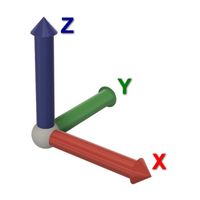 undefined Norder referenced this topic
undefined Norder referenced this topic
-
 undefined Norder referenced this topic
undefined Norder referenced this topic
-
 undefined Norder referenced this topic
undefined Norder referenced this topic
-
 undefined Norder referenced this topic
undefined Norder referenced this topic
-
 undefined Norder referenced this topic
undefined Norder referenced this topic